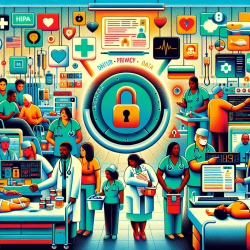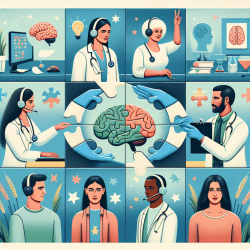Introduction
In the fast-paced environment of emergency departments (EDs), maintaining patient privacy and confidentiality is a significant challenge. The research article "From Hippocrates to HIPAA: Privacy and confidentiality in Emergency Medicine—Part II: Challenges in the emergency department" provides a comprehensive exploration of these issues. This blog aims to help practitioners enhance their skills by implementing the outcomes of this research or encouraging further exploration.
Understanding the Challenges
The ED setting is unique due to its open layout and high patient volume, often leading to breaches in privacy and confidentiality. The study highlights several factors contributing to these challenges:
- ED Design and Crowding: Large treatment bays and curtained areas often compromise patient privacy.
- Patient and Staff Safety: Sometimes, limiting privacy is necessary for safety, such as placing at-risk patients in observable areas.
- Visitors and Observers: The presence of visitors, law enforcement, and students can further complicate privacy issues.
- Filming Activities: The rise of reality-based TV shows has introduced new privacy concerns.
Implementing Research Outcomes
Practitioners can take several steps to address these challenges and improve patient outcomes:
- Advocate for Better Design: Encourage the use of private rooms and partitions in new or renovated EDs to enhance privacy.
- Utilize Privacy Screens: Use movable screens during procedures to minimize exposure.
- Limit Access: Control the presence of visitors and observers, ensuring they have patient consent.
- Educate Staff: Regular training on privacy practices can help staff remain vigilant.
Encouraging Further Research
While the article provides valuable insights, further research is essential to continue improving privacy and confidentiality in EDs. Practitioners are encouraged to explore the following areas:
- Technology Solutions: Investigate how electronic health records and other technologies can enhance privacy.
- Patient Education: Develop strategies to educate patients about their privacy rights.
- Policy Development: Work on creating policies that balance safety and privacy effectively.
Conclusion
Protecting patient privacy and confidentiality in the ED is both a moral and legal obligation. By implementing the strategies discussed and engaging in further research, practitioners can significantly enhance patient care and trust. To read the original research paper, please follow this link: From Hippocrates to HIPAA: Privacy and confidentiality in Emergency Medicine—Part II: Challenges in the emergency department.










